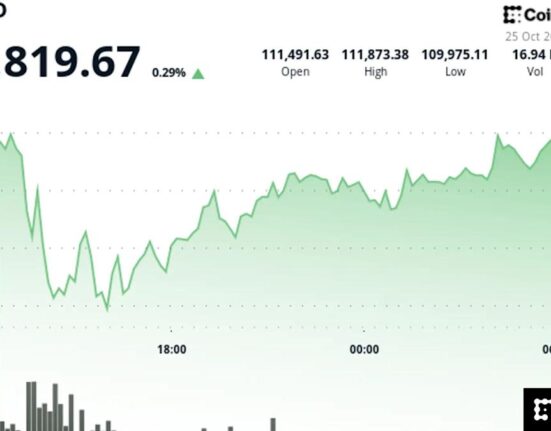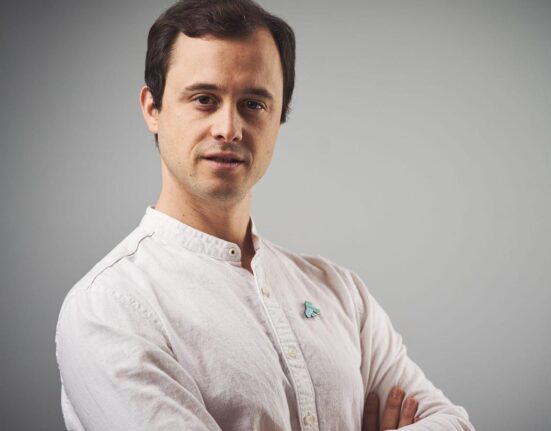When I was an aerospace engineer working on the NASA Space Shuttle Program, trust was mission-critical. Every bolt, every line of code, every system had to be validated and tested carefully, or the shuttle would never leave the launchpad. After their missions, astronauts would walk through the office and thank the thousands of engineers for getting them back home safely to their families—that’s how deeply ingrained trust and safety were in our systems.
Despite the “move fast and break things” rhetoric, tech should be no different. New technologies need to build trust before they can accelerate growth.
By 2027, about 50% of enterprises are expected to deploy AI agents, and a McKinsey report forecasts that by 2030, as much as 30% of all work could be carried out by AI agents. Many of the cybersecurity leaders I speak with are looking to bring in AI as fast as they can to enable the business, but also recognize that they need to ensure these integrations are done safely and securely with the right guardrails in place.
For AI to fulfill its promise, business leaders need to trust AI. That won’t happen on its own. Security leaders must take a lesson from aerospace engineering and build trust into their processes from day one—or risk missing out on the business growth it accelerates.
The relationship between trust and growth is not theoretical. I’ve lived it.
After NASA’s Space Shuttle program ended, I founded my first company: a platform for professionals and students to showcase and share evidence of their skills and competencies. It was a simple idea, but one that demanded that our customers trusted us. We quickly discovered universities wouldn’t partner with us until we proved we could handle sensitive student data securely. That meant providing assurance through a number of different avenues, including showing a clean SOC 2 attestation, answering long security questionnaires, and completing various compliance certifications through painstakingly manual processes.
That experience shaped the founding of Drata, where my cofounders and I set out to build the trust layer between great companies. By helping GRC leaders and their companies gain and prove their security posture to customers, partners, and auditors, we remove friction and accelerate growth. Our rapid trajectory from $1 million to $100 million in annual recurring revenue in just a few years is proof that businesses are seeing the value, and slowly starting to shift from viewing GRC teams as a cost center to a business enabler. That translates to real, tangible results–we’ve seen $18 billion in security influenced revenue with security teams using our SafeBase Trust Center.
When I was an aerospace engineer working on the NASA Space Shuttle Program, trust was mission-critical. Every bolt, every line of code, every system had to be validated and tested carefully, or the shuttle would never leave the launchpad. After their missions, astronauts would walk through the office and thank the thousands of engineers for getting them back home safely to their families—that’s how deeply ingrained trust and safety were in our systems.
Despite the “move fast and break things” rhetoric, tech should be no different. New technologies need to build trust before they can accelerate growth.
By 2027, about 50% of enterprises are expected to deploy AI agents, and a McKinsey report forecasts that by 2030, as much as 30% of all work could be carried out by AI agents. Many of the cybersecurity leaders I speak with are looking to bring in AI as fast as they can to enable the business, but also recognize that they need to ensure these integrations are done safely and securely with the right guardrails in place.
For AI to fulfill its promise, business leaders need to trust AI. That won’t happen on its own. Security leaders must take a lesson from aerospace engineering and build trust into their processes from day one—or risk missing out on the business growth it accelerates.
The relationship between trust and growth is not theoretical. I’ve lived it.
After NASA’s Space Shuttle program ended, I founded my first company: a platform for professionals and students to showcase and share evidence of their skills and competencies. It was a simple idea, but one that demanded that our customers trusted us. We quickly discovered universities wouldn’t partner with us until we proved we could handle sensitive student data securely. That meant providing assurance through a number of different avenues, including showing a clean SOC 2 attestation, answering long security questionnaires, and completing various compliance certifications through painstakingly manual processes.
That experience shaped the founding of Drata, where my cofounders and I set out to build the trust layer between great companies. By helping GRC leaders and their companies gain and prove their security posture to customers, partners, and auditors, we remove friction and accelerate growth. Our rapid trajectory from $1 million to $100 million in annual recurring revenue in just a few years is proof that businesses are seeing the value, and slowly starting to shift from viewing GRC teams as a cost center to a business enabler. That translates to real, tangible results–we’ve seen $18 billion in security influenced revenue with security teams using our SafeBase Trust Center.












Leave feedback about this